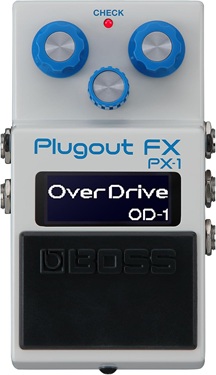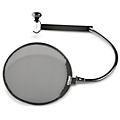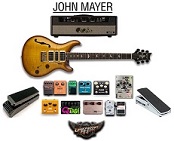Recording vocals in the studio is the easiest thing to do right? Wrong! But it can go quite smoothly if the singer uses good mic technique. In this article we'll discuss proper mic technique and its application.
The AKG 414 mic below is great for vocals.
Have you ever done a recording session with a singer who wasn't that great? Or maybe they were good but haven't had much studio experience at all. You get them to sing a few bits of their song so you can set the levels on the preamp and soundcard. You have the levels so you get a nice big phat wave form in your DAW so that you capture a lot of bits. Oh boy, this track is going to sound so hot you say to yourself!!
Then you hit the record button. The singer starts out and the levels are dead on. But then comes the chorus and the singer lets loose and really blows those pipes! Your level red lights. The track is crap...now you have to tell them. So who's fault was it?
You - as the studio owner/audio engineer could do things to avoid this problem. You could setup a compressor in the audio chain and have it handle the dynamics for you. Check out our article on compressors and compression if you are interested in that route. You also could sit there and ride the faders. When the vocalist sings loud, you pull the fader down and then push it back up when they are singing more quietely.
I propose something else. Teach the singer how to "work the mic". This is one of my favorite techniques for keeping even levels for a vocal track. I can't tell you how many times I've recorded great bands that had little studio experience and needed guidance on working the mic.
The general idea of working the mic is very simple. When the singer gets louder, they move backwards. When they get softer they move closer to the mic. The nice thing about this technique is that you can get a more natural sound since you don't have to effect the signal with a compressor. I've heard that the Beatles where experts at working the mic. They would do all sorts of things like move their hand in front of their mouth to reduce certain undesirable sounds and a host of other tricks.
I want you to watch a video of Christina Aguilera performing a song. I've always thought that she worked the microphone well. Watch her as she sings louder pieces. She pulls that microphone back and forth like crazy.
I once recorded a great singer who has a really powerful voice. When he would sing the loud parts of the song he literally had to go flying backwards because he was so powerful. It was fun to watch and a great display of studio prowess.
One tip I wanted to mention is that you should generally use a pop filter when recording vocals. The filter will not only protect your microphone from spit, it will help mellow or block any weird pops or ssssss sounds.
The Stedman filter below is a great pop filter:
Next time you have a vocal session, I dare you to experiment with the "working the mic" technique. See what you think - compare it to your compressor tracks. Get a little crazy and have some fun. Let us know how it goes!




